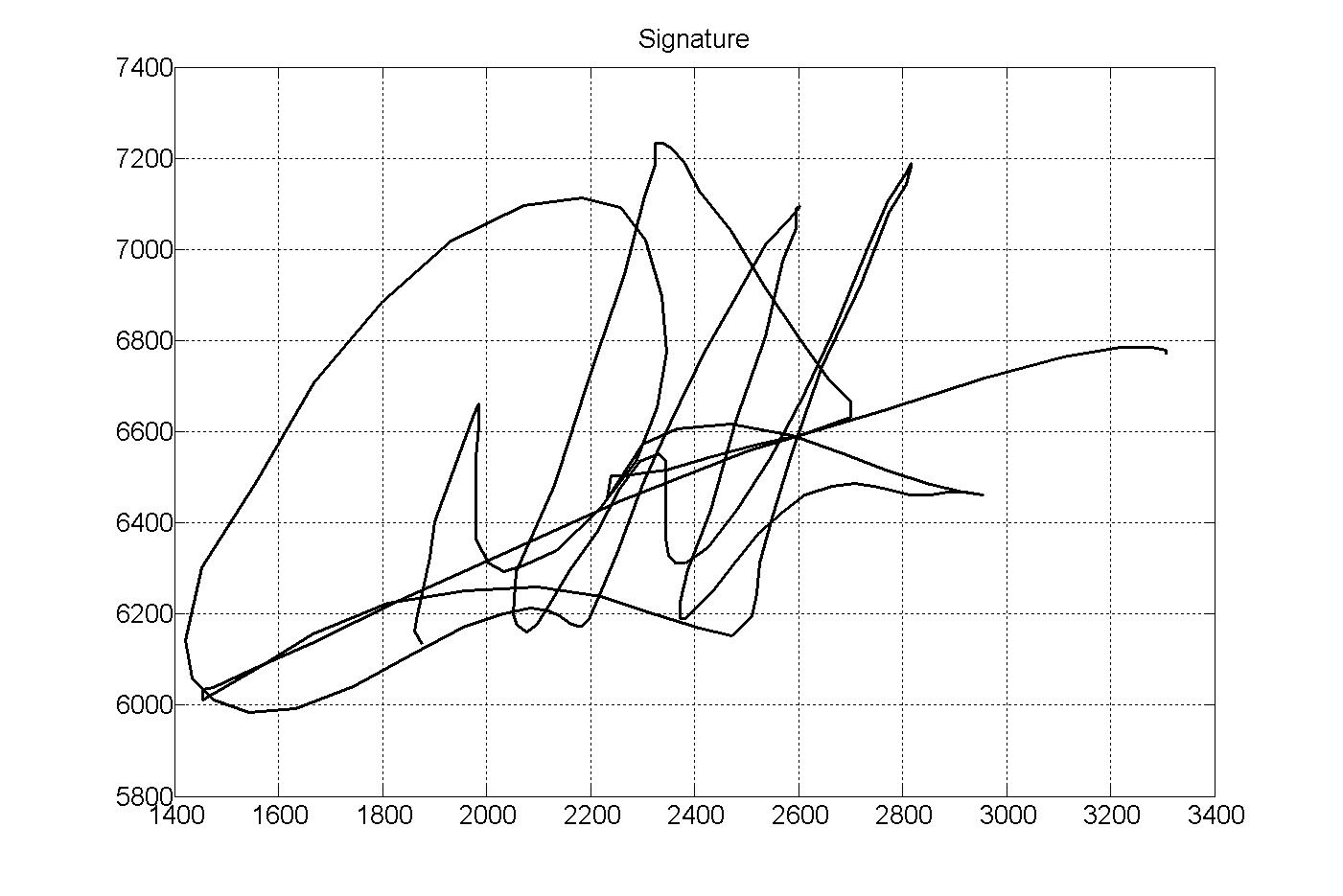Signature Recognition on:
[Wikipedia]
[Google]
[Amazon]

 Signature recognition is an example of behavioral
Signature recognition is an example of behavioral

 Signature recognition is an example of behavioral
Signature recognition is an example of behavioral biometrics
Biometrics are body measurements and calculations related to human characteristics and features. Biometric authentication (or realistic authentication) is used in computer science as a form of identification and access control. It is also used t ...
that identifies a person based on their handwriting. It can be operated in two different ways:
Static: In this mode, users write their signature
A signature (; from , "to sign") is a depiction of someone's name, nickname, or even a simple "X" or other mark that a person writes on documents as a proof of identity and intent. Signatures are often, but not always, Handwriting, handwritt ...
on paper, and after the writing is complete, it is digitized through an optical scanner or a camera to turn the signature image into bits. The biometric system then recognizes the signature analyzing its shape. This group is also known as "off-line".
Dynamic: In this mode, users write their signature in a digitizing tablet, which acquires the signature in real time. Another possibility is the acquisition by means of stylus-operated PDAs. Some systems also operate on smart-phones or tablets with a capacitive screen, where users can sign using a finger or an appropriate pen. Dynamic recognition is also known as "on-line". Dynamic information usually consists of the following information:
* spatial coordinate x(t)
* spatial coordinate y(t)
* pressure p(t)
* azimuth az(t)
* inclination in(t)
* pen up/down
The state-of-the-art in signature recognition can be found in the last major international competition.
The most popular pattern recognition
Pattern recognition is the task of assigning a class to an observation based on patterns extracted from data. While similar, pattern recognition (PR) is not to be confused with pattern machines (PM) which may possess PR capabilities but their p ...
techniques applied for signature recognition are dynamic time warping
In time series analysis, dynamic time warping (DTW) is an algorithm for measuring similarity between two temporal sequences, which may vary in speed. For instance, similarities in walking could be detected using DTW, even if one person was walk ...
, hidden Markov model
A hidden Markov model (HMM) is a Markov model in which the observations are dependent on a latent (or ''hidden'') Markov process (referred to as X). An HMM requires that there be an observable process Y whose outcomes depend on the outcomes of X ...
s and vector quantization
Vector quantization (VQ) is a classical quantization technique from signal processing that allows the modeling of probability density functions by the distribution of prototype vectors. Developed in the early 1980s by Robert M. Gray, it was ori ...
. Combinations of different techniques also exist.
Related techniques
Recently, a handwritten biometric approach has also been proposed. In this case, the user is recognized analyzing his handwritten text (see also Handwritten biometric recognition).Databases
Several public databases exist, being the most popular ones SVC, and MCYT.References
{{Reflist Biometrics